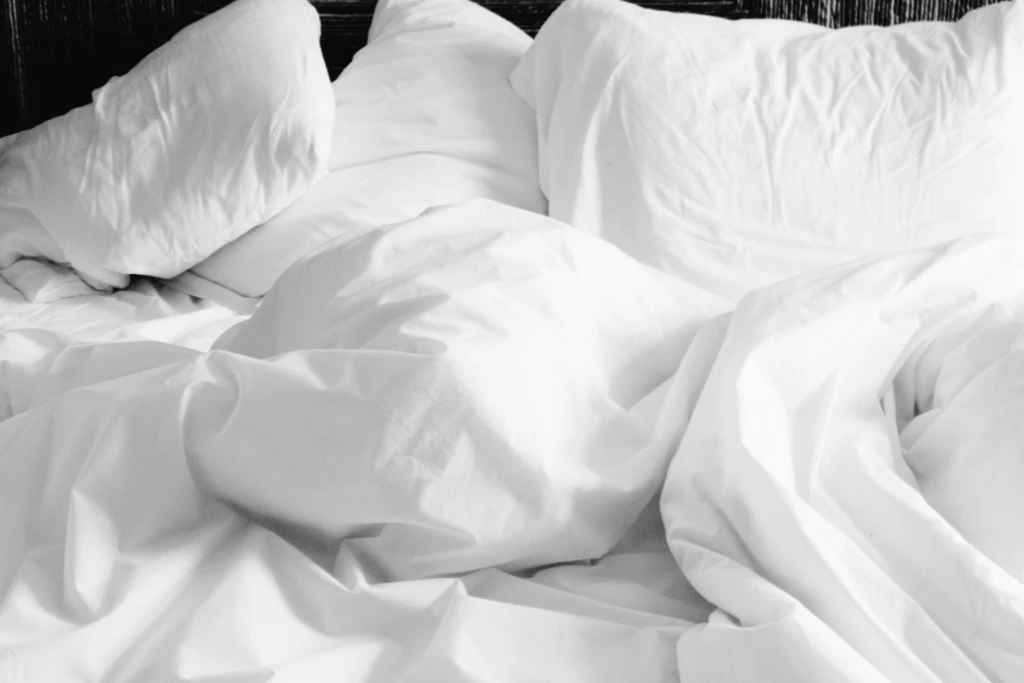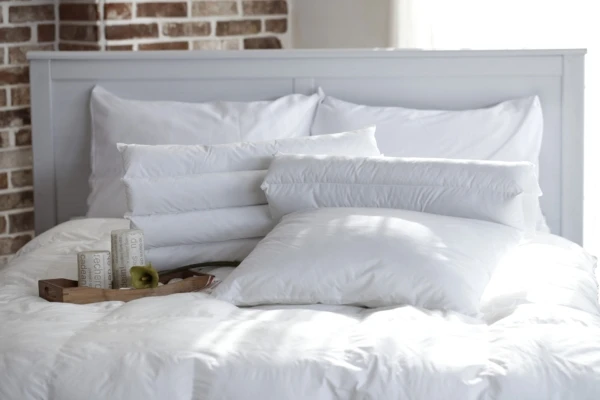How to Choose the Right Pillow and How Often Should You Replace It?

Who hasn't heard that a good night's sleep depends on a comfortable mattress? Equally important is a pillow that suits your head shape, body type, and even sleeping position. A wrongly chosen pillow makes your neck stiff and doesn't let you rest properly at night. Moreover, a poor pillow doesn't just affect your sleep quality, but can cause headaches, neck pain, and numbness in your hands. Take a closer look at which pillow suits your sleeping position!
There is no one ideal pillow that works for everyone. Suitability depends primarily on the position you sleep in. However, regardless of sleeping position, a pillow should always maintain its shape (even when you move around) and shouldn't require frequent fluffing to keep it full. A pillow should keep your head in a natural position, which means your head shouldn't be tilted too far forward or too far back, but should rest comfortably on your shoulders — roughly the same position as when you stand upright with a straight back.

Which pillow suits you?
If you sleep on your back:
In this case, a thinner pillow suits you (so your head isn't tilted too far forward), with a thicker and higher lower part. This way the pillow also supports your neck. A good choice is a pillow with Memory Foam, as it adapts to the shape of your neck and head; a water pillow also works well, as it supports your head and neck while sleeping and adapts to your body again after movement. A good tip is also to place an extra pillow under your knees while sleeping, which relieves pressure on your lower back.
If you sleep on your stomach:
In this case, you should use as thin a pillow as possible or try sleeping without a pillow altogether. Stomach sleeping puts strong pressure on your lower back and it would be best to try sleeping on your side instead. If you like to feel something against your stomach while sleeping, take a pillow to cuddle!
If you sleep on your side:
Choose a firmer pillow for sleeping and prefer one with a wide gusset — it provides better support for the area between your ear and shoulder. Compared to a regular pillow, where the lower and upper parts are simply sewn together at the edges, a pillow with a gusset has an insert sewn between the lower and upper parts, which raises the pillow higher. You should also place an extra pillow between your knees while sleeping, which helps keep your spine in the correct position.
Types of pillows
Different materials are used as pillow fillings and each has its own characteristics:
Feathers – a firmer pillow that maintains good shape and is easily adjustable. Down feathers — softer and often more expensive than regular feathers, medium firmness. Memory Foam — a firmer pillow, but adapts according to pressure points, following the shape of your head and neck. Buckwheat — medium or firmer pillow that provides good support. Can make crunching sounds when moving at night, which can bother some people. Water – the firmness of the pillow can be easily adjusted by changing the water level. Adapts to your head and neck position, but can make sounds when moving. Wool – medium or softer pillow. Thanks to good temperature regulation, it maintains temperature so your head isn't too hot or too cold underneath. Cotton and polyester — cheaper than wool, mostly medium firmness or soft.
NB! Pillows should be replaced on average every 18 months, as a long-used pillow can be full of various disease-causing agents and allergens. You can test whether a pillow has "had it" by folding it in half and seeing if it returns to its proper shape or not. If it doesn't, then it's time to get a new pillow.
Article source: Moodne Kodu

Search
Keywords
Most read articles
- Price per Square Meter of Apartments in Tallinn in 2025

- Estonian Apartment Prices and Market Expectations in 2025

- The Apartment Market in Estonia's Largest Cities in 2025

- Notary Fee and State Fee – Who Pays and How Much?

- Five-year transition period ended: nearly zero-energy building requirements extended to new small residential buildings

